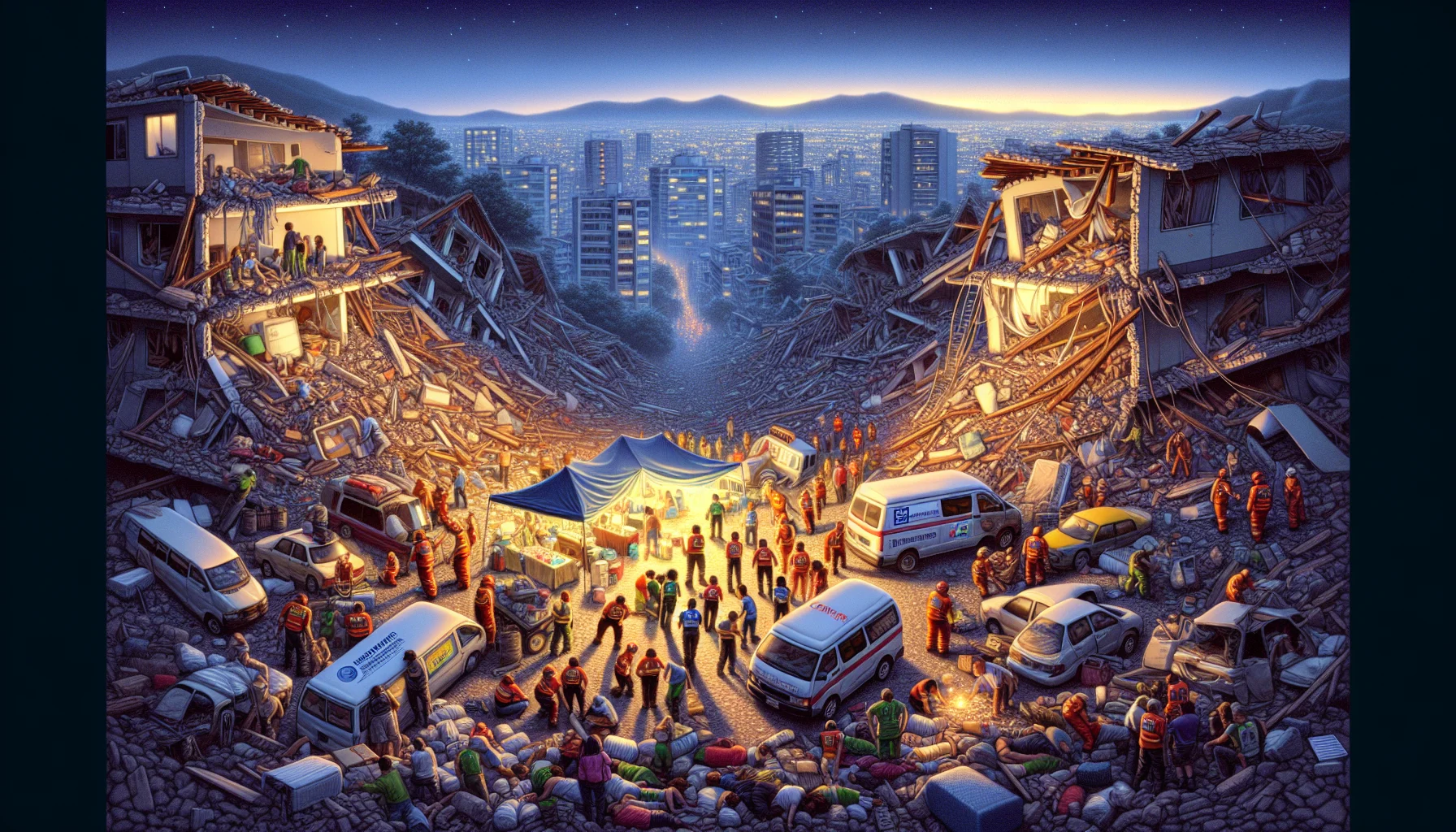
The 2010 Haiti Earthquake
by: The Calamity Calendar Team
January 12, 2010
Haiti's Vulnerable Foundations
Before disaster struck on January 12, 2010, the island nation of Haiti was already grappling with formidable obstacles. Nestled on the island of Hispaniola, which it shares with the Dominican Republic, Haiti was recognized as the poorest country in the Western Hemisphere. The country’s political landscape was rocky, marked by instability and corruption, paired with inadequate infrastructure and lackluster economic development. Its vulnerability was starkly pronounced due to poor building standards, a factor that would soon play a tragic role in the fate that awaited its citizens.
Situated along the boundary between the Caribbean and North American tectonic plates, Haiti rests on a seismic fault line. While this geographical reality hinted at potential danger, the country had not experienced a significant earthquake in over two centuries. Consequently, disaster preparedness was minimal, making the leadership woefully unprepared for the scale of the calamity that would unfold when nature unleashed its seismic might.
The Earthquake Strikes
The day started like any other. Streets buzzed with the usual clamor of life in Port-au-Prince, the bustling capital of Haiti. But at 4:53 PM local time, life took a dramatic and devastating turn. A powerful 7.0 magnitude earthquake struck, its epicenter near Léogâne, a mere 25 kilometers west of the capital. The ground convulsed violently, like a beast finally unleashed after centuries of fitful slumber.
Residents were overwhelmed by the monstrous force beneath their feet, as homes, offices, schools, and sacred structures tumbled into piles of concrete dust and twisted metal. Iconic landmarks such as the Presidential Palace and the Port-au-Prince Cathedral crumbled, leaving only ruins in their wake. Hospitals, already scarce, were rendered incapacitated just when they were needed most. A tsunami of bricks and dust swept away neighborhoods, suffocating the air with loss and horror.
Shockwaves and Echoes
The tremors that heralded the disaster were deemed only a prelude to further catastrophe. Within the first twelve days following the mainshock, at least 52 aftershocks, measuring 4.5 or greater in magnitude, reverberated across the island. Each aftershock was a cruel reminder to the traumatized populace that nature had not yet settled. Survivors huddled outdoors, fearful that any enclosed space could become a death trap.
The immediate human toll was unimaginable. An estimated 230,000 souls perished, their lives extinguished in moments. Over 300,000 were injured, bearing physical and mental scars that would linger indefinitely. Streets that once bustled with energy became grave markers, where the wails of the bereaved pierced the heavy silence that followed each tremor.
Thanks for subscribing!
The Aftermath: A Humanitarian Crisis
What the earthquake did not destroy outright, it exposed mercilessly: Haiti’s thin infrastructure was laid bare. Vast tracts of the city were reduced to jagged landscapes of debris. More than 1.5 million residents found themselves homeless, forced to seek refuge in makeshift camps that sprang up amid the wreckage. Real estate was lost or unrecognizable, with over 250,000 residential properties and about 30,000 commercial buildings heavily damaged or completely obliterated.
The economic devastation was staggering. Loss estimates hovered between $7.8 billion and $8.5 billion, a staggering figure that dwarfed Haiti’s gross domestic product in 2009. The fragile economy lay in shambles, complicating an already arduous path toward recovery.
Global Response and Relief Efforts
As news of the disaster spread, a wave of empathy and humanitarian aid surged across the globe. Nations responded with urgency to alleviate the immense suffering on the tiny Caribbean island. The United States mobilized significant resources, dispatching military and humanitarian aid to bolster recovery operations. Countless international organizations, including the United Nations, Red Cross, and a multitude of NGOs, scrambled to offer assistance.
But the challenges were legion. Logistical nightmares plagued the distribution and coordination of aid. With major infrastructure damaged or destroyed, delivering essential supplies like food, water, and medical aid became an uphill battle. Amidst this humanitarian chaos, the United Nations deployed peacekeepers to maintain order and assist in distributing aid with little expediency and safety.
Despite these difficulties, glimmers of resilience emerged. Communities formed cooperative networks of support among neighbors, driven by an indomitable will to survive. Global efforts, however fraught, persisted in the tumultuous years following the quake, gradually helping to rebuild and restore some semblance of normalcy amid chaos.
Lingering Challenges and Fragile Resilience
Years later, the aftermath of the 2010 earthquake continues to shadow Haiti, as the nation grapples with persistent economic and social hurdles. Reconstruction has been sluggish. Substantial international aid injected into recovery was hindered by lingering political discord and environmental risks. Natural disasters, like hurricanes, further exacerbated the struggle and impeded progress.
Some strides have been made since that dark day. Discussions of improved building codes and disaster readiness have materialized into partial reforms, though full implementation remains uneven. Thousands still inhabit substandard living conditions as they await a more stable future.
In its persistence, Haiti embodies both the enduring scars of tragedy and the human spirit's inexorable will to endure, to rise from the rubble, and to keep marching forward, no matter the odds. As we reflect on the past, the resilience of the Haitian people in the face of unspeakable hardship is a testament to their strength and courage—an unyielding resolve to rebuild amidst the ruins of what was, and to dance in hope of what might yet be.
Stay in the Loop!
Become a Calamity Insider and get exclusive Calamity Calendar updates delivered straight to your inbox.
Thanks! You're now subscribed.